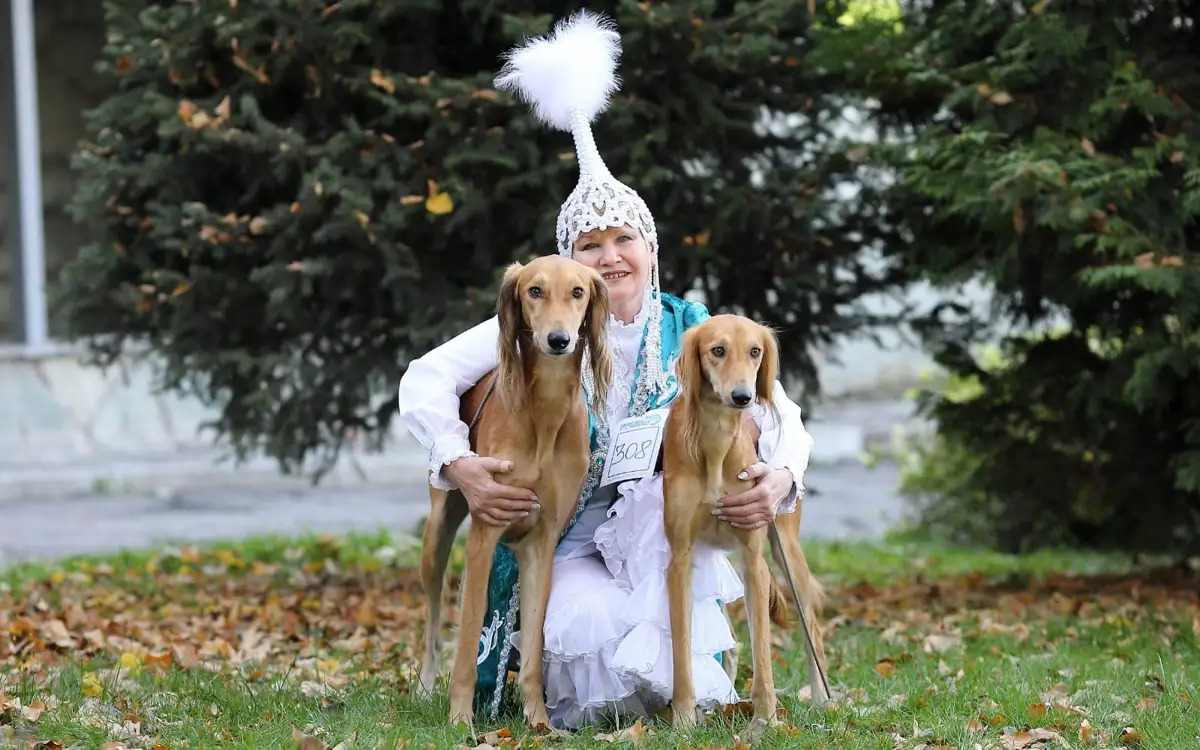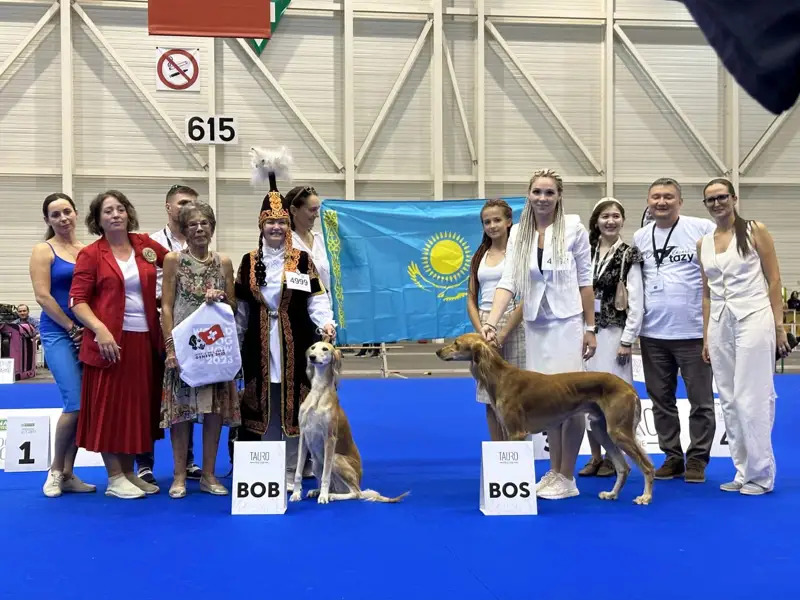ASTANA – Kazakh tazy, a dog native to Kazakhstan, is winning titles and hearts alike in international dog show championships, said Yelena Khardina, a passionate breeder from Oskemen who has dedicated 16 years to preserving the breed in an interview with Kazinform news agency.

Yelena Khardina, a passionate breeder from Oskemen who has dedicated 16 years to preserving the breed. Photo credit: From the personal archive of Elena Hardina
Khardina knows what it takes to maintain the bloodline of tazy. Every day she takes care of the dogs, travels to the regions of Kazakhstan to select the best representatives of the breed, and negotiates with international experts.
“For me, tazys are more than just dogs—they embody our past and our soul. If we fail to preserve them, we risk losing more than a breed. We will lose a part of our history,” said Khardina to Kazinform.
She has been breeding and raising dogs since 1990, with her kennel housing breeds such as Dobermans, English Bulldogs, and Boxers. Her first encounter with a tazy was 18 years ago, during an exhibition, organized while serving as the head of the dog breeders’ club.
“I just fell in love with these beautiful animals at first sight. They are such beautiful creatures that it seems as if they came to us from legends. I knew about this breed before, but I had never seen them up close. And then their grace, stateliness, intelligence and cleverness just took my breath away,” said Khardina.
Now, Khardina owns eight adult tazy dogs and eight puppies, which run free in her kennel, and she hopes to instil the love and passion in the breed in others to keep a tradition alive. Her tazy puppies are finding homes across the globe in England, Hungary, Türkiye, Russia, and as far as the United States.
About Kazakh tazy
The Kazakh tazy is an ancient and revered breed native to Central Asia, particularly Kazakhstan. It is closely associated with Kazakh culture and traditions, often regarded as a national treasure. The breed has been valued for centuries for its hunting skills, loyalty, and adaptability to harsh environments.
Although no longer used for hunting, the breed can reach speeds of 60 kilometers per hour when out in the open landscapes and maneuver quickly when required.
The year 2023 marked a historic milestone for the Kazakh Tazy, when the breed was officially recognized by the Fédération Cynologique Internationale (FCI), granting Kazakhstan the prestigious status of breed holder. This designation makes Kazakhstan the official custodian of the breed, responsible for establishing its standards, promoting its development, and ensuring its preservation on the global stage.
“But this is only the first step. FCI has given Kazakhstan 10 years to develop and approve the final breed standards. This period is a time of active work. Now we have to form a population of at least a thousand dogs with a confirmed pedigree. This is not as easy as it seems. Many dogs are in private hands, and owners often do not even think about the importance of registration. We need to educate, develop kennels, organize more exhibitions and competitions,” said Khardina.
Another key objective is to advance genetic research to establish the breed’s uniqueness and distinguish it from other greyhounds. This involves collaboration with international experts, comprehensive data collection, and regular reporting to the FCI.
Championing dog shows
“Exhibitions are not just about competition. It is a complicated and costly process involving preparation of dogs, flights, visas. But for me it is very important not only to preserve but also to show the world our Kazakh tazy, as well as our traditions and customs,” said Khardina.

Performance at world dog show championships. Photo credit: From the personal archive of Elena Hardina
“My dogs performed at world championships, and in every country, people lined up to be photographed with them. Our people in any country are characterized by cohesion and hospitality. Kazakhs living in Europe welcomed us like relatives. Wherever I perform, I am proud to tell everyone that we are Kazakhs and our strength is in our traditions and unity,” she added.
Khardina speaks with pride about her dogs’ achievements, including victories at the 2016 World Championship in Moscow and the 2023 World Dog Show in Switzerland. At last year’s competition, Kazakh tazys were introduced to Europe for the first time, with two of Elena’s dogs, Tumar and Vangeliya, securing first-place wins. Remarkably, Vangeliya was already nine years old at the time. The experts in Geneva unanimously agreed that Kazakh tazys are true treasures among greyhound breeds, according to Khardina.
The article was originally published in Kazinform.




